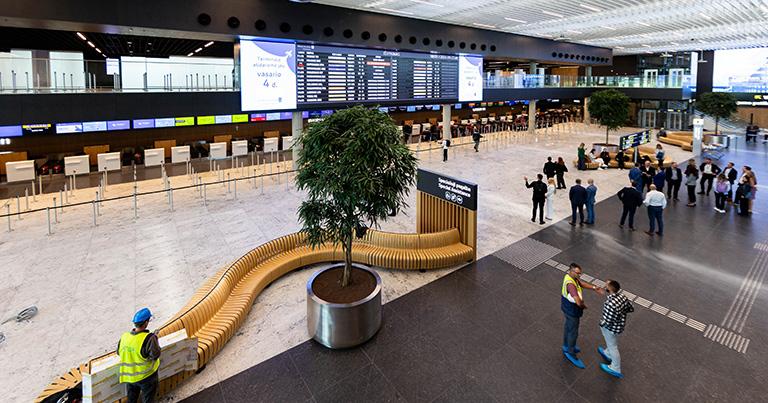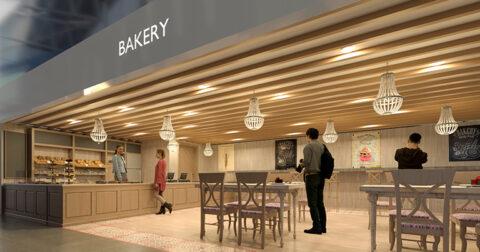
Vilnius Airport has completed construction of its new departures terminal, with the remaining works to be carried out on the installation and testing of equipment inside the terminal before its opening in February 2025.
“The coming years will be crucial for the development of the infrastructure of Lithuanian airports to increase passenger handling capacity and to reach a whole new level of service quality,” said Minister of Transport and Communications Marius Skuodis. “Vilnius Airport will be the first to demonstrate this qualitative leap, with its new departure terminal soon to not only handle double the number of passengers, but also provide a completely new level of travel experience thanks to state-of-the-art technology. We are therefore consistently pursuing our goal of raising the standard of Lithuanian airports to the next level, so that travelling through the new gateway will be as comfortable as possible.”
The new operational strategy is based on two key objectives – promoting the development of sustainable partnerships and the contribution of the airport ecosystem to the Lithuanian economy.
“For our aviation, commercial and institutional partners, we aim to create an environment that enables consistent, sustainable growth,” said Simonas Bartkus, CEO, Lithuanian Airports. “Much of the change we seek over the four-year period will be related to the planned expansion of airport infrastructure. We want these investments to have a direct impact both on improving the passenger experience and the overall ability to serve more passengers, and to provide a platform for businesses to expand their operations at our three international airports. In the coming years, we will see that the airport space is changing dramatically, and in this process our focus will be on the highest quality bar, which we want to achieve together with our partners.”
Once the testing of the departure terminal is completed and it is open to passengers, the next stage of Vilnius Airport’s conversion will be ahead. It will include the re-planning and modification of the old terminal areas, which will allow for a significant expansion of commercial activities and will provide passengers with more opportunities to access a wider range of services.
“We plan to start the conversion of the existing terminals around mid-2025,” said Bartkus. “As the entire departure function will have already been transferred from the old terminal to the new terminal, we will continue the changes at the airport, which will be aimed at growing our capacity to provide more space for commercial services and to offer more convenience to passengers.”
The conversion of the old terminals will last until the end of 2026. In parallel, the planning and construction of the new arrivals terminal will be carried out, which is expected to be operational by the end of 2028.







